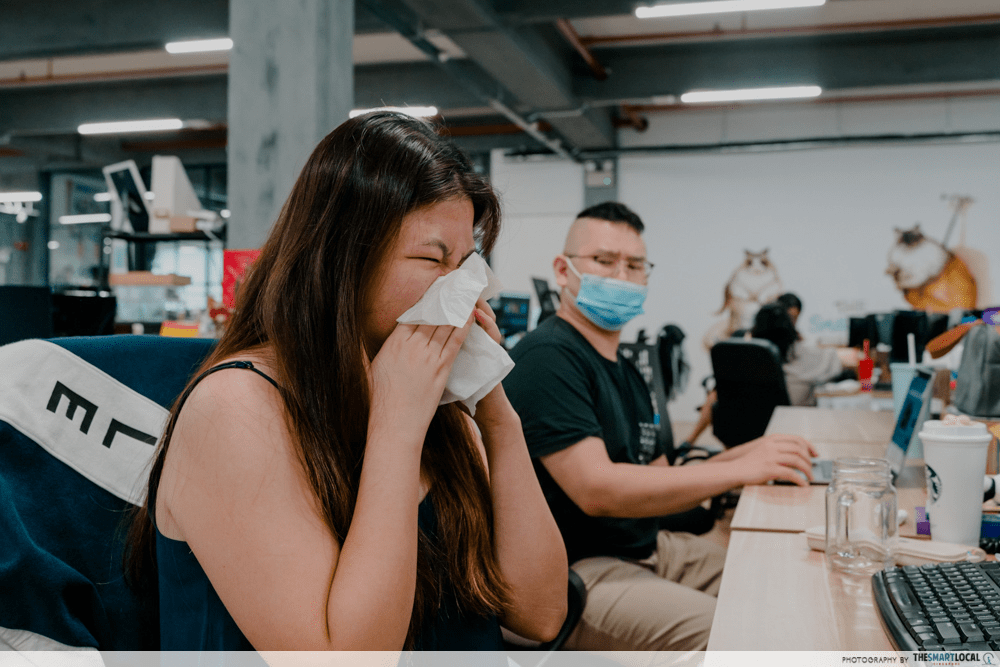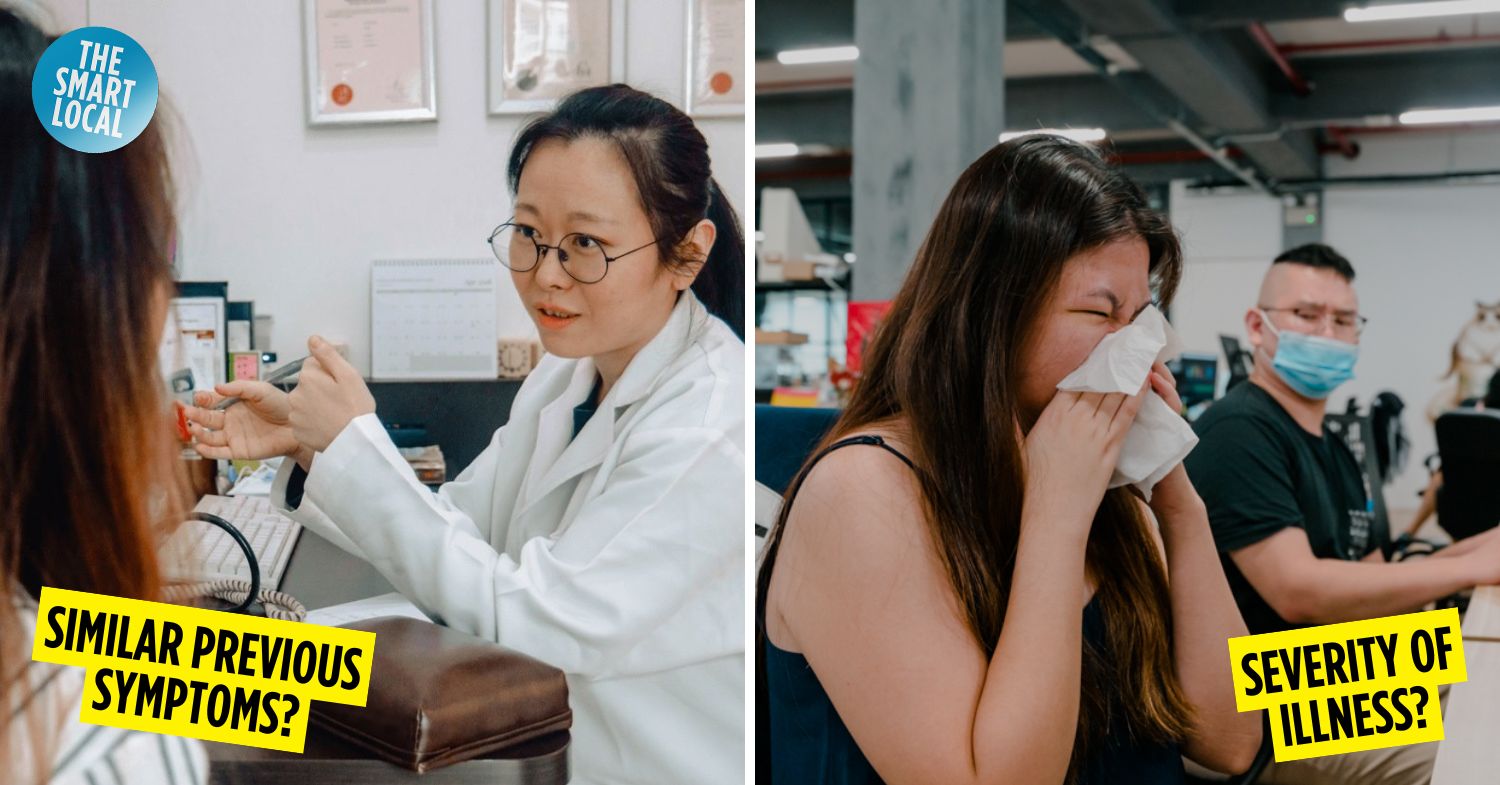What to do when you’re feeling sick
Ever since the big hoo-ha in 2019, AKA the Covid-19 pandemic, we’ve all become slightly paranoid whenever we hear a sneeze or get an itchy throat. In some cases, a stuffy nose might indicate that you’re falling sick – but there’s also a chance that your room is just dusty.
Instead of blindly guessing and gaslighting yourself into thinking you’re severely ill, we’ve listed out simple steps to take when you’re feeling sick. This includes what to do and who to contact if needed, so you don’t panic and spiral out of control. Here’s what to do:
Step 1: Recall medical history for similar symptoms

If you’re starting to feel scared, here’s a reassuring virtual pat. Stay calm, and recall your medical history. Have you experienced similar symptoms in the past? Or has a family member been exhibiting the same type of illness?
Conditions such as Sinusitis are pretty prone to recur, especially since it is caused by viruses, bacteria, or allergies. Your trigger might be present again, causing the same illness to happen. On the other hand, if your family member has been diagnosed with a contagious ailment, and you’re experiencing the same effects, chances are you’ve been infected with that same illness.
Step 2: Call the NurseFirst hotline

Image credit: Freepik
If you are still unsure, call the NurseFirst hotline, managed by Woodlands Health, at 6262 6262. NurseFirst’s services are suitable for those who are having non-life-threatening medical issues, such as fever, vomiting, and dizziness. This helpline is open from 8am-11pm every day, including public holidays.
Step 3: Describe your symptoms

Trained nurses will be receiving your call. Remember how you’ve recalled your symptoms? Now’s the time to describe your symptoms as clearly as possible. This includes when they started, how painful they are, and any other related detail that you might deem helpful for them to accurately diagnose your affliction.
Step 4: Decide if it’s urgent or non-urgent
The nurse on the line will first note down some basic personal information and then ask you to describe your symptoms. They will then assess the severity of your symptoms and advise on the next appropriate actions to take.
If they deem the symptoms to be mild, you may be advised to simply treat your condition with over-the-counter medications. In cases where the symptoms seem to be more severe, you may be directed to the most appropriate healthcare options.
Step 5: Go to the necessary clinics if needed

If your condition requires a visit to a healthcare provider, the nurse will recommend you the most appropriate place for medical care. This may be going to your nearby general practitioner (GP) clinic or Urgent Care Centre. If it is for a life-threatening condition, you will be directed to the Emergency Department at the nearest hospital.
Seek medical help with NurseFirst when you’re feeling sick
We know, it sucks to be sick. On top of the physical discomfort, there’s also the mental stress from figuring out what’s wrong and how to recover fastest. Instead of self-diagnosing or asking the Internet for help, hotlines such as NurseFirst are useful platforms to go to if you’re uncertain of what to do. Most importantly, the helpline is free, so you won’t even be charged for advice over the call from the trained nurses.
Now, drink more water and take your vitamins, kids.
Learn more about NurseFirst
This post was brought to you by Woodlands Health.
